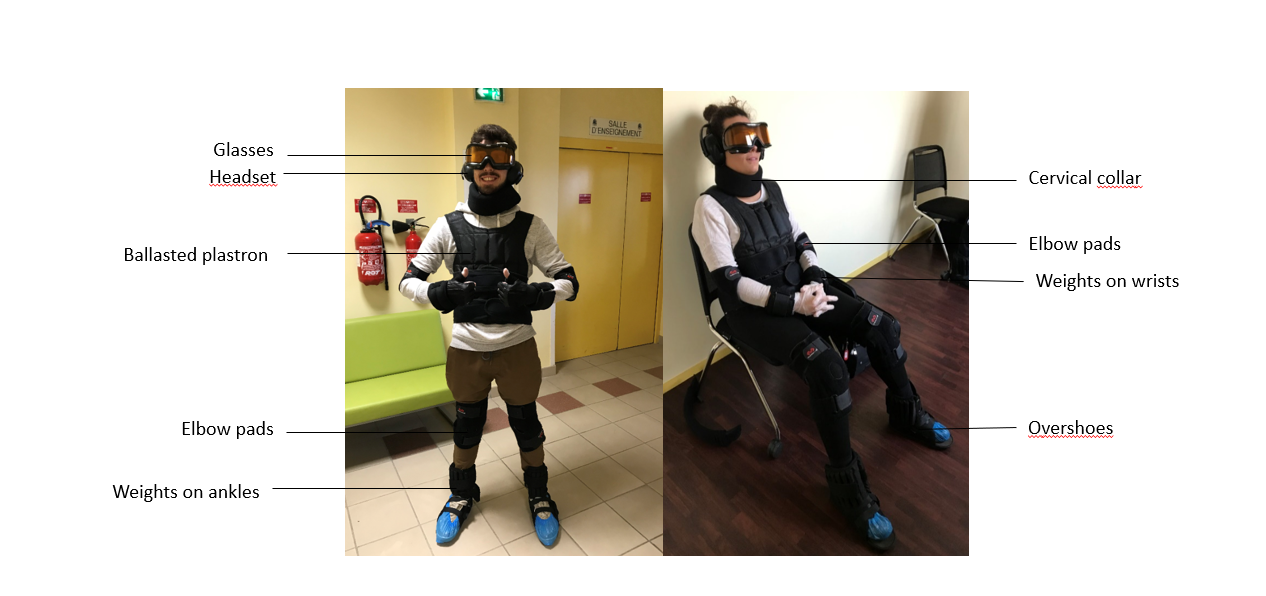
Functional and sensory limitations, such as decreased hearing and vision, difficulties with mobility, disturbed balance, and loss of fine sensitivity are very common with advancing age. Indeed, after the age of 80, about 30% of individuals present three or more limitations. Unfortunately, many health professionals working with older patients are not sufficiently aware of the impact of these difficulties on daily living. As a result, they may adopt inappropriate attitudes towards older persons they care for, such as lack of patience or empathy.
The aging-simulation experience is a promising method to make health professionals feel the age-related limitations and to promote empathy towards older persons. Our new study, published in BMC Geriatrics, describes the effects of this innovative educational training.
What we did
During the academic year 2015-2016, we gathered 306 health professionals working with older patients in the Department of Gerontology and Geriatrics at Sorbonne Université in France to actively participate in the aging-simulation experience.
The age-simulation suit we used, GERT (Wolfgang Moll, Germany), is composed of several elements:
- overshoes reducing the perception of the ground
- cervical collar simulating stiffness of the neck
- knee and elbow pads limiting movement
- weights on wrists and ankles reproducing muscle loss
- a ballasted plastron (weighted breastplate) causing an arched posture
- a headset and glasses simulating loss of hearing and vision
- gloves simulating loss of sensitivity

Each participant wore the aging suit for an average of 15 minutes and performed different actions according to a defined scenario: sitting and getting up from a chair, going up and down stairs, lying down on the floor and getting up, serving a glass of water and drinking it, and eating.
We collected participants’ perceptions of age-related limitations before and after the simulation experience using a self-administered questionnaire comprising free association tests and Likert scale questions. We created semantic categories from participants’ free evocations and we compared participants’ answers before and after the simulation experience. In total, we collected 3,060 free evocations and ten semantic categories emerged: (1) decreased hearing, (2) decreased vision, (3) stiffness, (4) slowness, (5) loss of balance, (6) fall, (7) clumsiness, (8) negative emotions, (9) loneliness, and (10) difficulties. These semantic categories focused on two aspects, the first concerning participants’ geriatric knowledge about age-related functional and sensory limitations and the second concerning participants’ feelings related to the aging-simulation experience.
Effects of the aging-simulation experience
We observed statistically significant changes in the categories quoted by participants before and after the simulation experience. First, some categories were less cited after the simulation experience, such as the categories decreased hearing (from 88% to 79%) and slowness (from 76% to 62%). Second, some categories were more often mentioned after the experience, such as stiffness (from 11% to 17%), loneliness (from 11% to 25%), and difficulties (from 42% to 60%) . Lastly, we noted that participants’ opinions on age-related difficulties were impacted by the experience: participants considered age-related difficulties to be more significant after the aging-simulation experience than before.
The emotions elicited during this experience anchor perceptions of functional and sensory limitations deeply in the memory.
Thus, it is clear that the aging-simulation experience modifies health professionals’ perceptions of functional and sensory limitations. Moreover, this educational device improves patience and empathy of health professionals towards older patients, which has been documented by a complementary qualitative study (in press) based on semi-structured interviews.
How does it work?
During this experience, health professionals feel the effects of aging and put themselves in the shoes of older patients they care for. Thus, professionals become aware of the impact of age-related limitations on activities of daily living. The emotions elicited during this experience anchor perceptions of functional and sensory limitations deeply in the memory. Conducted in groups, the workshops on the simulation allow health professionals to share a convivial moment and to build together more accurate representations of older individuals.
This device is simple to implement. At the beginning of the workshop, a short presentation by the teacher introduces participants to the experience. Then the participants can operate independently, helping each other to dress and undress. A short intervention (about 15 minutes in the simulation suit for each participant) is sufficient to change mindsets. However, it is important that, at the end of the workshop, the teacher offers a debriefing time for participants to share their feelings resulting from this sensory experience.
What’s next?
Few studies have examined the effects of this pedagogical training on the medium and long term. It would be interesting, in the future, to explore the persistence of this experience over time, as well as its effects on care practices.
Comments